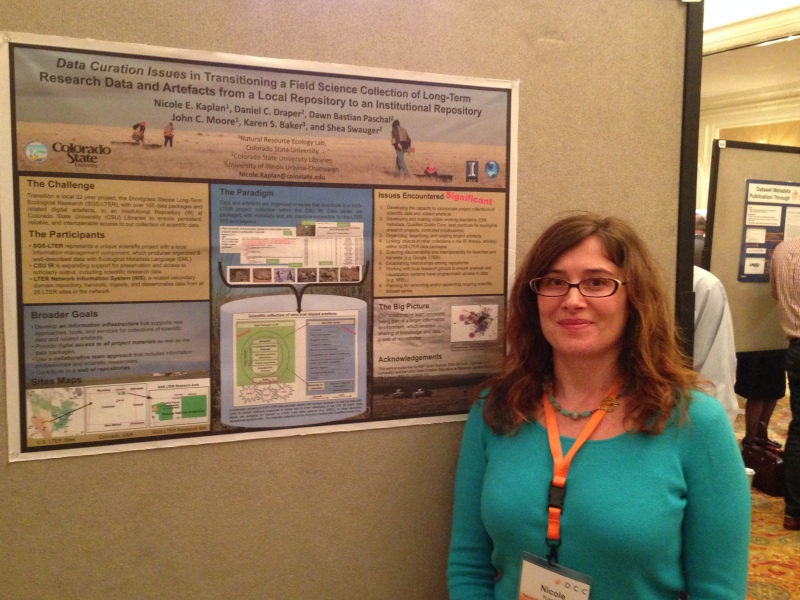
A Report from the International Digital Curation Conference
This post comes from Nicole Kaplan, a NRELian who has traveled to San Francisco, CA, for the International Digital Curation Conference. This is the first of several posts from Nicole about data management in scientific research.
My interest in submitting data management stories to EcoPress aligns well with the 9th International Digital Curation Conference (IDCC14) in San Francisco, so I am using my first attendance at this conference to write my first blog post. I want to share some of my thoughts on what’s being presented here that I think will be of interest to NREL. These are highlights from a couple speakers this morning.
Dr. Jane Hunter from the University of Queensland demonstrated eco-informatics tools for managing and using tools to visualize movement of animals from accelerometer data and GPS units. OzTrack (http://oztrack.org/) adds value to field data by allowing researchers to track and map animal movement. Behind this system is an ontology or data model to classify how movements of wild animals can be interpreted from raw field data. Comparative classifications first needed to be incorporated into the data model. Domesticated animals such as dogs were used to model dingoes and horses were used to model camels. The ratio of spine length to spine height resulted in a reliable measure for determining how the movement of domesticated animals relates to feral animals. This is an interesting system that involves participation of stakeholders in designing data models and enables visualization of research data for those interested in conserving or managing wild animal populations in Australia. I found it interesting that Dr. Hunter attributed the success of this project, in part, to having a dedicated liaison between the eco-informatics team and stakeholders.

Dr. Atul Butte (Stanford) stressed the availability of open data and the reuse of data and samples from biomedical research. Getting data and samples for performing new computational analysis is no longer an issue. He showed examples of how downloadable data and samples ordered online are accelerating new discoveries in biomedical research to improve treatment and develop new drugs. This approach to science is driven by available data and is proving to be transformative and innovative. The potential for new discoveries lies within millions of records of data values, we just have to be able to analyze and interpret them. Can these approaches be applied to domains beyond biomedical research? Where do we begin? Data management is a good starting point; if researchers provide open access to their data (or samples) then they ensure the data are discoverable to new users. I’m here to learn more about how to prepare data, where to submit it, and how to use it. Dr. Butte encouraged the audience to share and play with data with the same enthusiasm we share and post pictures and content from our devices – you know what he’s talking about, e.g., Grumpy Cat. This is a link to an interview with Dr. Butte: http://www.dcc.ac.uk/blog/idcc14-preview-atul-butte.
-Nicole Kaplan
The featured image is a word cloud that was created using Wordle. Text for the word cloud was taken from a description of digital curation found on the Digital Curation Conference website.